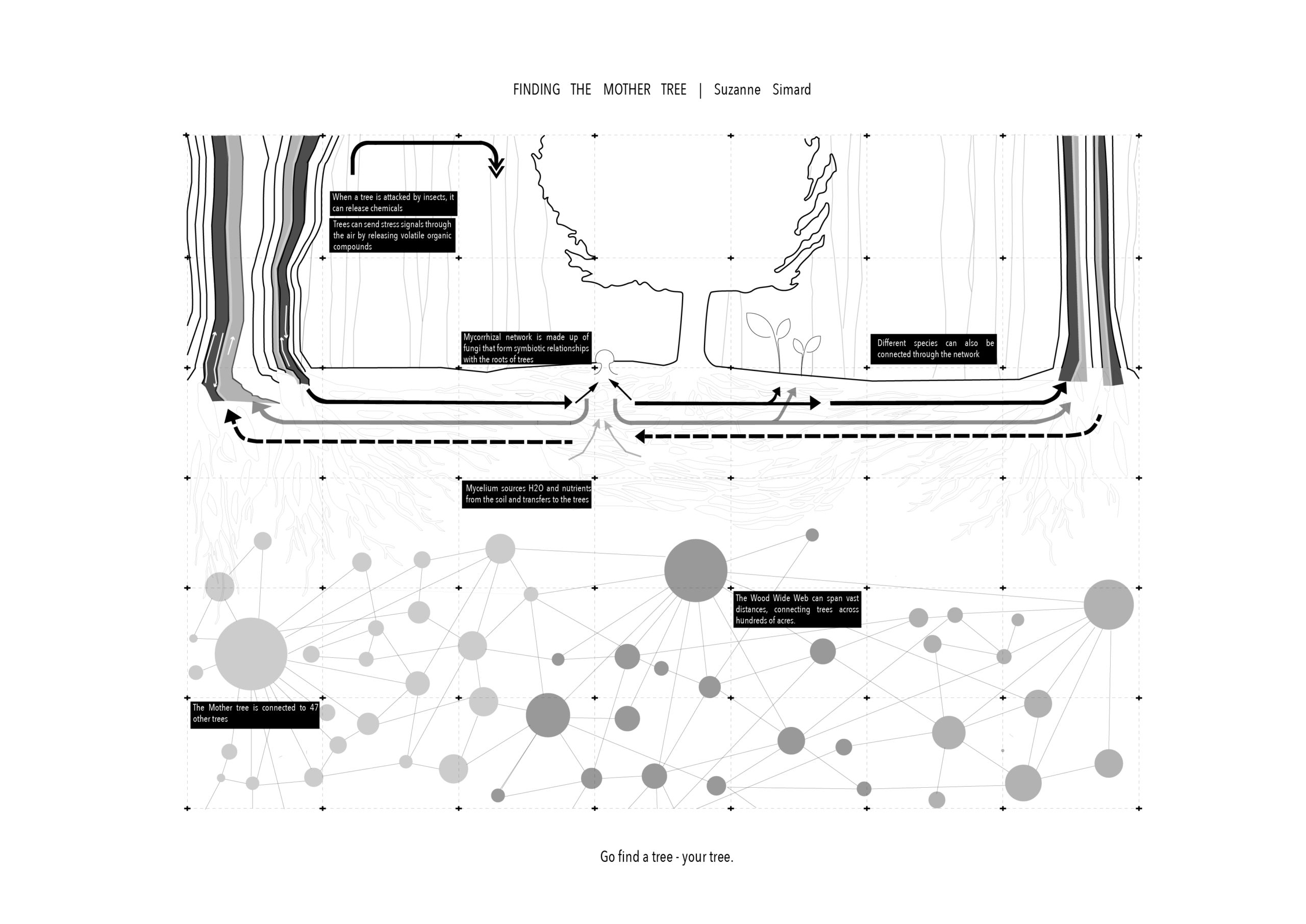Finding the Mother Tree by Suzanne Simard is a book that introduces the interdependent world of trees and their communication networks. Suzanne Simard, a forest ecologist with decades of experience in researching trees, shares her personal stories. Through this book, she shares her scientific research that uncovers the remarkable ways in which trees communicate and help each other through a system of underground fungal networks.
The book starts with a very inspiring saying “This book is not about how we can save tree , this is about how trees might save us”. The book follows Simard’s quest for a “mother tree,” a central tree that acts as a hub in the forest network, connecting and nurturing other trees. Through her research, she challenges the traditional view of forests as isolated collections of individual trees and highlights the complex social structures that exist within them.
Her research reveals that trees are not individual beings but deeply interconnected through their root systems, sharing resources and information with each other. They share carbon and nutrients and send chemical signals to warn of insect attacks. The fungal networks allow older “mother trees” to pass on their wisdom to younger trees, helping them survive in challenging environments.

The diagram that accompanies the book summarizes the key facts of Simard’s project, “The Talking Tree.” It shows the tree networking between hub trees and offspring, with each hub tree having connections with over 47 other trees, including trees of other species. The movement of resources within the forests are highlighted to express how trees work in collaboration, as opposed to the popular notion of them working against each other competing for light and resources.
The top section of the diagram focuses on the understory of the forest, showing how trees communicate with each other through underground fungal networks. A cross section through the tree shows the flow of carbon and nutrients within xylem, phloem and tree roots. This section across the forest demonstrates:
-the transfer of surplus carbon from a hub tree to younger trees (of the same kin)
-the exchange of surplus carbon within different tree species during different seasons (deciduous tree to conifers in summer, conifer trees to deciduous in winters)
-the transfer of carbon from trees to the mycelial network
-the transfer of water and nutrients from the mycelial network to the trees
-the aerial stress signals sent from hub trees to alert other trees.
The bottom section of the diagram highlights the different nodes in the forest, the complex interactions between the trees and also how the size of trees dictates the interconnections, with the hub tree being the oldest and tallest tree.
Finding the Mother Tree is an eye-opening exploration of the interconnectedness of life on Earth and calls for a rethinking of our relationship with the natural world. Her findings emphasize the importance of preserving forest ecosystems, which have been devastated by human activity.

